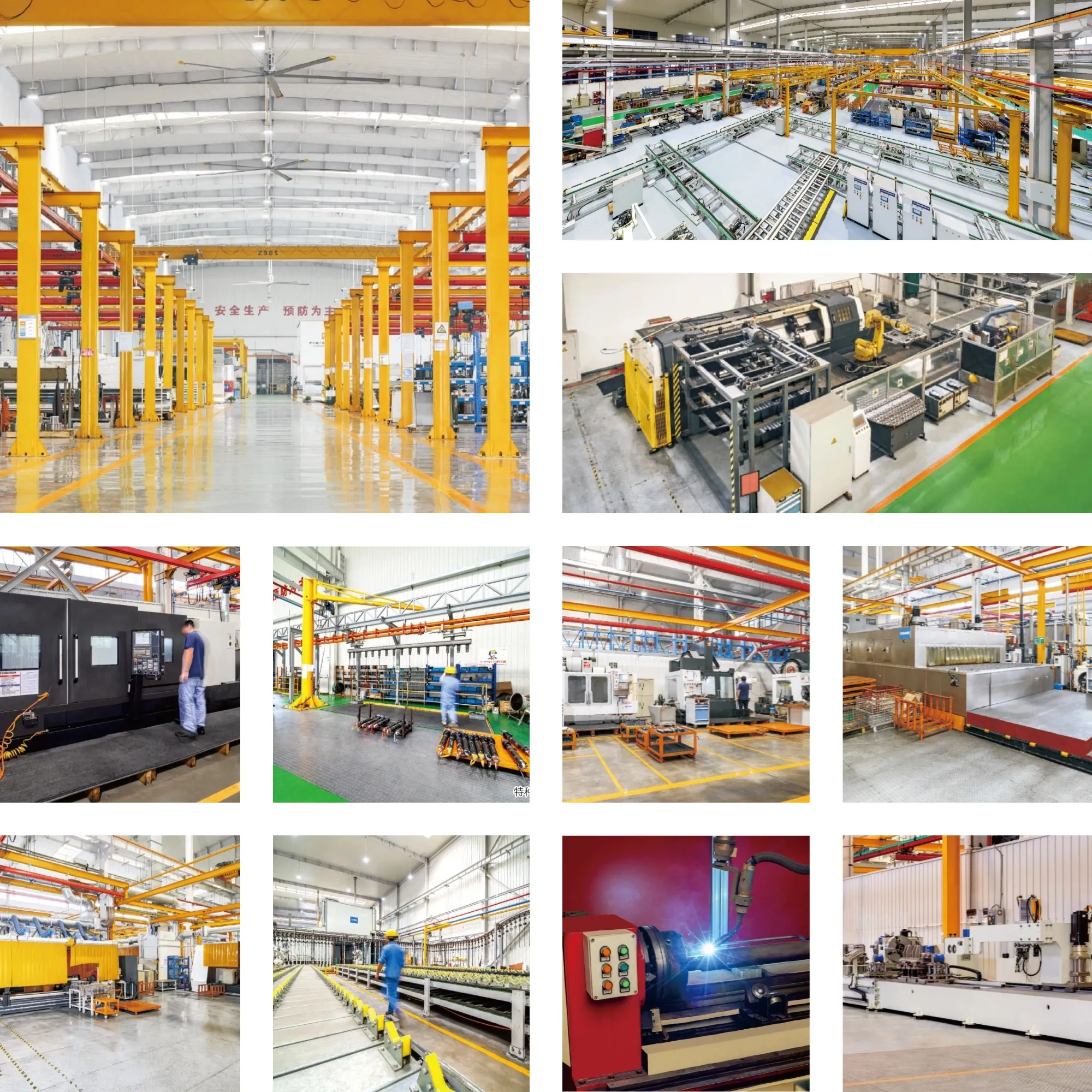Replacement Of AHC19764 Hydraulic Cylinder
Ως ένας από τους κατασκευαστές, προμηθευτές και εξαγωγείς υδραυλικών κυλίνδρων μηχανικών προϊόντων, προσφέρουμε υδραυλικούς κυλίνδρους και πολλά άλλα προϊόντα.
Παρακαλούμε επικοινωνήστε μαζί μας για λεπτομέρειες.
Ταχυδρομείο:sales@hydraulic-cylinders.net
Κατασκευαστής προμηθευτής εξαγωγέας υδραυλικών κυλίνδρων.
Product Definition
The Replacement Of AHC19764 Hydraulic Cylinder is a critical component in a variety of heavy machinery, used to convert fluid power into linear mechanical force. This cylinder is designed to replace damaged or worn-out hydraulic cylinders found in John Deere equipment, allowing for efficient and reliable operation.
Specifications and Compatibility
The Replacement Of AHC19764 Hydraulic Cylinder weighs 25.5 lbs, with dimensions of 5″ in height, 5.5″ in width, and 22.3″ in length. This cylinder is compatible with the 444 P, 444L, 524 P, 524L, 544 P, 544L, 624 P, 624L, 644 P, 644 X, 644L, 644LH, 724 P, and 724L John Deere models.
Product Features
Improved Equipment Performance
Replacing damaged or worn-out hydraulic cylinders can restore equipment’s normal operational ability, ensuring optimal performance for various applications.
Enhanced Safety
Regularly replacing hydraulic cylinders reduces the risks associated with cylinder failure, ensuring the safety of both equipment and operators.
Overload Protection
New cylinder designs often include better overload protection mechanisms, improving equipment safety.
Quick Installation
Modern hydraulic cylinders are designed with ease of installation and replacement in mind, minimizing downtime.
Standardized Components
Many hydraulic cylinders are standardized products, making replacement parts easy to obtain on the market.
Applications
Here are a few examples of where the Replacement Of AHC19764 Hydraulic Cylinder can be applied:
- Excavators – for the arm or bucket where the hydraulic cylinder may become damaged due to long-term use or overload
- Cranes – for the lifting arm hydraulic cylinder, which is prone to wear and tear due to frequent lifting and lowering
- Tractors – for the front loader hydraulic cylinder, which may leak or suffer from performance degradation due to constant tilting and lifting operations
- Harvesters – where high-pressure hydraulic systems may cause cylinder fatigue and failure during harvesting operations
- Automated production lines – where hydraulic cylinders are used to control robotic arms and other automated equipment, immediate replacement is necessary to avoid production downtime
- Die casting machines – where high-pressure and high-temperature environments may cause cylinder performance degradation
- Mining equipment – where hydraulic cylinders are used for lifting and moving heavy loads, regular inspection and replacement are necessary to prevent equipment failure
- Bulldozers – for the bulldozer arm, where cylinder wear may lead to reduced pushing efficiency
Maintenance
Regular Inspections
It is important to inspect hydraulic cylinders regularly to ensure they are functioning correctly. Tasks such as checking for leaks, ensuring proper alignment, and examining hoses and fittings should be included in regular maintenance routines.
Proper Lubrication
Hydraulic cylinders require proper lubrication to function correctly. Adequate amounts of hydraulic oil should be added regularly to keep cylinders properly lubricated.
Seal Replacement and Calibration Checks
Seals should be replaced regularly to prevent leaks and ensure cylinder performance. Calibration checks should also be performed to ensure correct cylinder operation.
Safety and Environmental Considerations
When using hydraulic cylinders, safety measures are of the utmost importance. Always follow manufacturer guidelines and recommended safety procedures to avoid accidents or injuries. It is also essential to consider environmental concerns when disposing of old or damaged cylinders. Proper disposal methods should be followed to avoid contamination or other environmental issues.
Troubleshooting and Common Issues
Common problems with hydraulic cylinders include leaks, failed seals, and erratic operation. To diagnose problems, it is important to first identify the symptoms and then examine the cylinder for potential faults. Once the issue is identified, appropriate repair methods can be employed to fix the problem. Preventative measures such as regular maintenance can also help reduce the likelihood of future problems.
Design Considerations and Selection Criteria
Hydraulic cylinder design must take into consideration factors such as load-bearing capacity, seal integrity, durability, safety, and maintenance requirements. The choice of materials, such as polyurethane and nitrile rubber, can also impact cylinder performance. Proper lubrication and maintenance are also essential to ensuring optimal cylinder performance and longevity.
Company Introduction
We are a leading manufacturer and wholesaler of hydraulic cylinders, offering a comprehensive range of products to both domestic and international markets. Our company prides itself on providing high-quality products, customized services, and excellent after-sales support. Our facilities are equipped with state-of-the-art production equipment, and we hold several international certifications, including ISO 9001 and CE. We also offer customized cylinder design and rebuilding services to meet our customers’ unique needs.

Author: lyl
Περιηγηθείτε στο εργοστάσιο VR:
Περιηγηθείτε στο εργοστάσιο VR με τα εξής
Υδραυλικός κύλινδρος Εφαρμογή:


